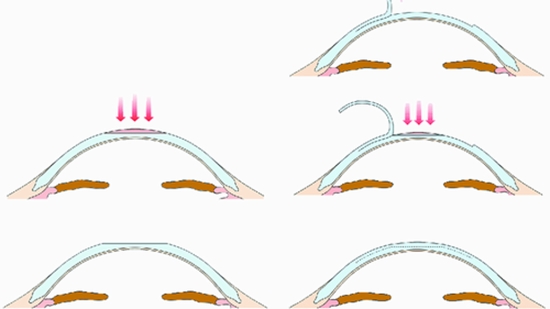Changes in stereopsis after photorefractive keratectomy
Photorefractive keratectomy could result in an improvement in stereopsis. Patients with high myopia benefitted most from PRK in terms of improvement in stereopsis.

Abstract
Purpose: To evaluate the effects of photorefractive keratectomy (PRK) on the stereopsis of myopic and hyperopic patients.
Setting: Farabi Eye Hospital, Tehran, Iran.
Design: Prospective case series.
Methods: This study included patients having PRK to achieve emmetropia. The patients were divided into the following 3 groups: low myopia (<-6.0 diopters [D]), high myopia (>-6.0 D), and hyperopia (<+4.0 D). Near stereoacuity was measured using the Randot test under photopic conditions (with corrective glasses) at 40 cm preoperatively (with corrective glasses) and 1, 3, and 12 months postoperatively. Repeated-measure analysis of variance was used to assess changes in stereopsis over time in the 3 groups.
Results: Each group comprised 60 patients. The mean preoperative stereoacuity was 121.16 seconds of arc (arcsec) ± 149.92 (SD), improving to 83.66 ± 75.84 arcsec 1 month postoperatively and 80.66 ± 64.31 arcsec at 3 months (both P < .001). It remained unchanged (83.33 ± 75.01 arcsec) at 12 months (P = .610). Patients with high myopia had the greatest improvement in stereopsis after PRK compared with low myopic and hyperopic patients (P < .001). The improvement in stereoacuity was significantly higher in the severe anisometropic group; the lowest improvement was in the group without anisometropia.
Conclusion: Photorefractive keratectomy could result in an improvement in stereopsis. Patients with high myopia benefitted most from PRK in terms of improvement in stereopsis.
Financial disclosure: None of the authors has a financial or proprietary interest in any material or method mentioned.

ارسال نظر